Brow Gels Are the LBD of Eye Makeup and You Can't Convince Me Otherwise
Fluffy, laminated, or sculpted—you pick.


Gabrielle Ulubay
Brow trends change ceaselessly from generation to generation. Thin brows dominated in the early 2000s; a decade later, beauty devotees turned to bushy eyebrows à la Cara Delevigne, causing volume-enhancing eyebrow pencils and eyebrow growth serums to fly off shelves. More recently, defined looks including soap brows, microblading, and brow tinting have taken the beauty world by storm. Through all these ever-changing trends, the best brow gels have reigned supreme because of their simplicity and versatility.
A great brow gel has long-lasting appeal in your beauty routine, celebrity makeup artist Samantha Lau tells Marie Claire. No matter which brow style is trending, “eyebrow gels can shape and set your brows.” Tinted versions fill in sparse areas, volumizing formulas create a fuller look, and some gels are even infused with ingredients that encourage hair growth. From "clean" formulas by Merit and Charlotte Tilbury to Glossier’s cult-favorite gel, each of the best brow gels holds your preferred shape in place—and keeps it there all day.
Whether you’re sticking with the same brow shape you’ve always had or you’re test-driving an eyebrow trend, the best brow gels are a great final touch for any makeup routine. Shop 13 must-have formulas ahead, each selected based on Lau’s recommendations, rigorous editor testing, and reviews from other well-groomed shoppers.
The Best Brow Gels
- Best Eyebrow Gel Overall: Benefit Cosmetics Gimme Brow+ Eyebrow Gel
- Best Natural-Looking Eyebrow Gel: Merit Brow 1980
- Best Waterproof Eyebrow Gel: Urban Decay Big Bush Tinted Brow Gel
- Best Strong-Hold Eyebrow Gel: Anastasia Beverly Hills Clear Brow Gel
- Best Texturizing Eyebrow Gel: KS&Co Sheer Tinted Brow Gel
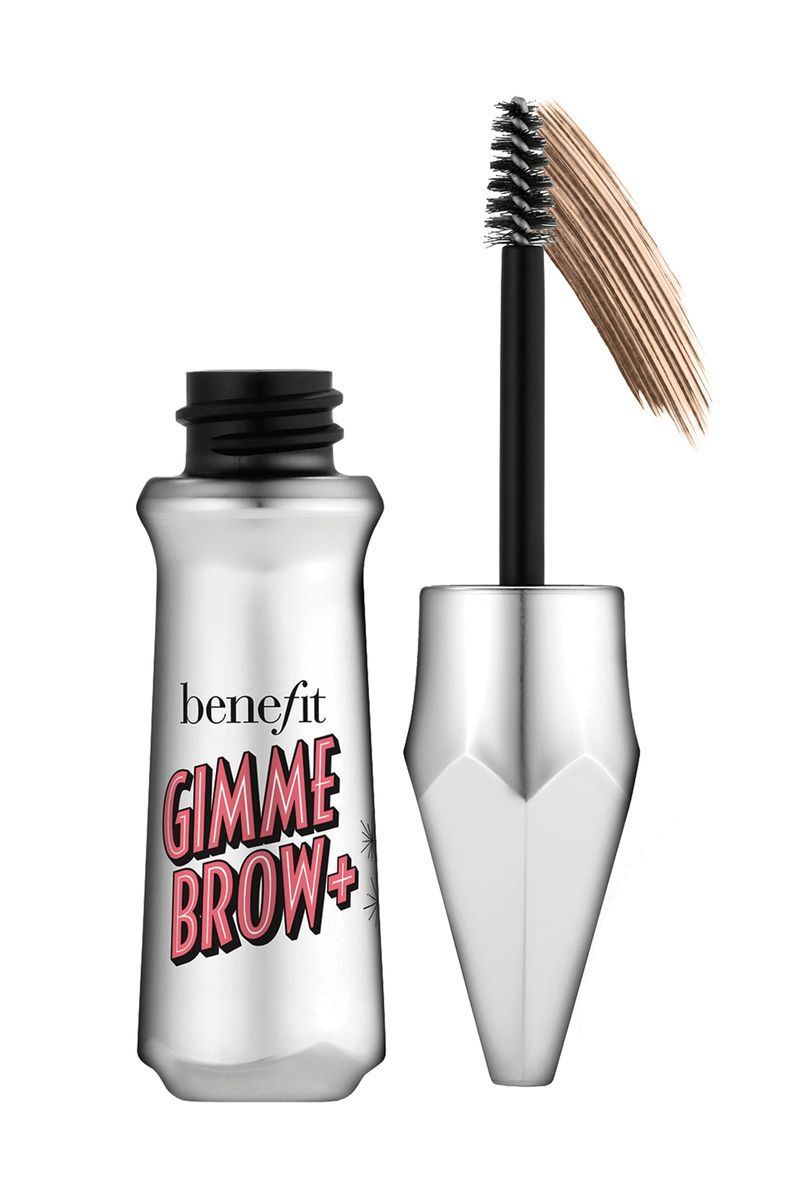
Benefit's brow gel brings noticeable volume to otherwise thin, sparse eyebrows. When I over-plucked one of my eyebrows, this brow gel helped me do major damage control—easily covering up the gap until it thankfully grew back. This is due to the tiny micro-fibers that attach to each hair, resulting in the illusion of fullness. Whether you're dealing with a brow emergency or not, it doesn't leave a sticky residue and lasts forever, and it still washes off easily when you remove your makeup at the end of the day.
Hold: Medium
Shades: 10
What I Love: Creates a noticeably fuller effect; Comes in a wide array of colors
What I Don't: Use lightly, or it may result in too much product
Customer Review: "I've tried so many brow gels and I always find my way back to Benefit's Gimme Brow. It gives me the exact, not-too-overdone look I prefer for every day, and I don't have to layer it on too heavily to notice an immediate tint and fill of my brows. I love that it has little fibers in it, so I don't have to hand draw in hairs for my brows to look full. It's the perfect all-in-one for a quick and clean brow fill." — Nykia Spradley, Contributing Beauty Writer

Nykia Spradley applies Benefit Gimme Brow+ Eyebrow Gel.
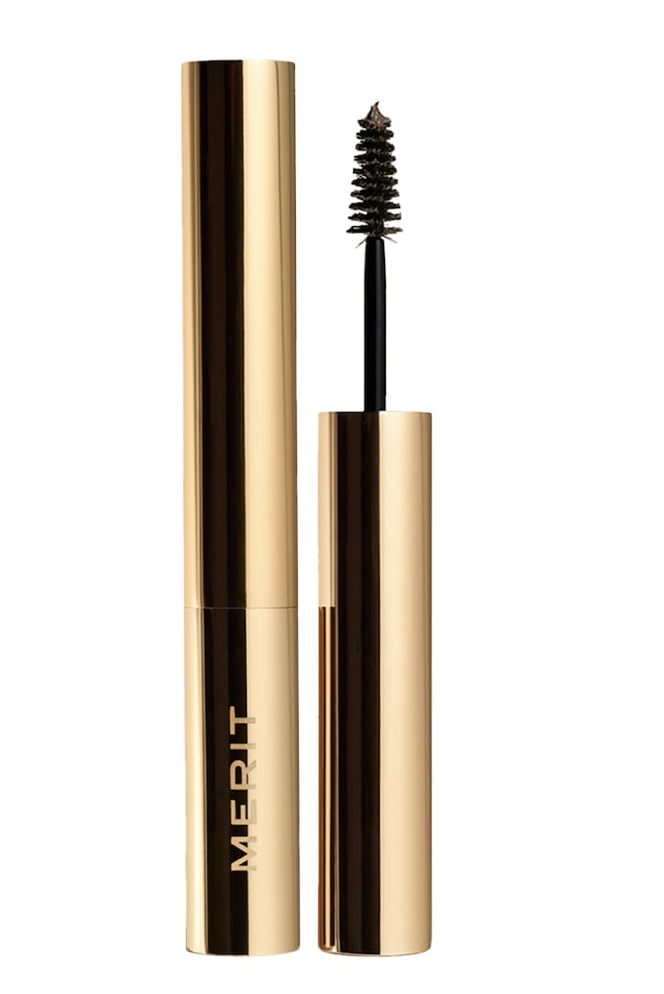
If you're looking for an everyday brow gel or if you just prefer a natural finish to a glossy one, consider this option from Merit Beauty. It's lightweight with a light hold and creates realistic-looking volume. It's perfect for those who don't want to change their brow look too much, but who want to add just a hint of fullness here and there.
Hold: Light
Shades: 4
What I Love: Clean; Vegan; Cruelty-free; Tapered brush style is easy to control
What I Don't: Limited shade range for a tinted gel
Review for MC: "I absolutely love this brow gel. The tapered style of the brush makes it really easy to coat every eyebrow hair, yet the pigment disperses extremely evenly, so it's never overdone. I haven't dealt with any flaking or smudging either—just a natural, full brow." — Ariel Baker, Beauty Writer
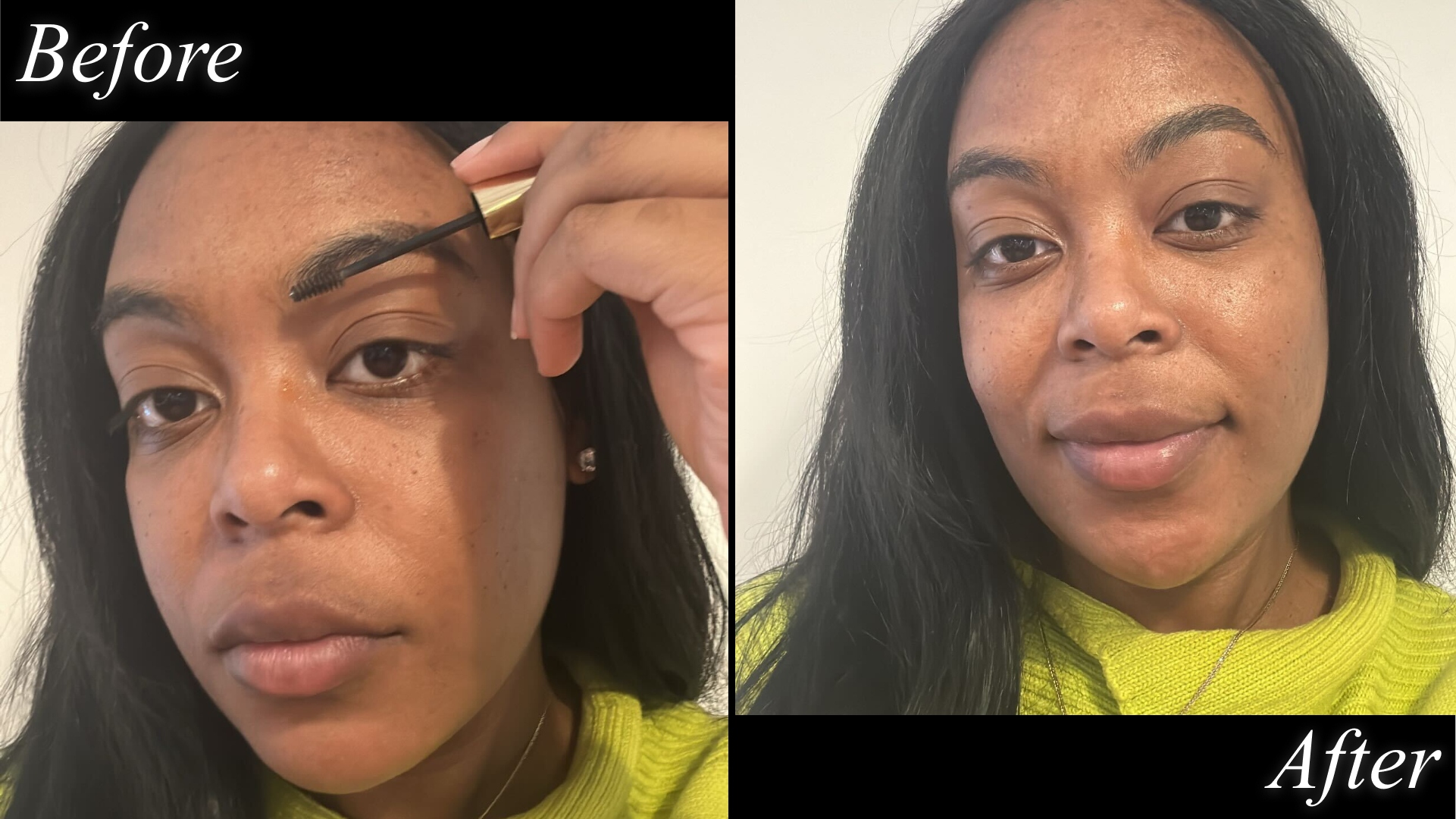
Ariel Baker applies Merit Brow 1980 Gel.
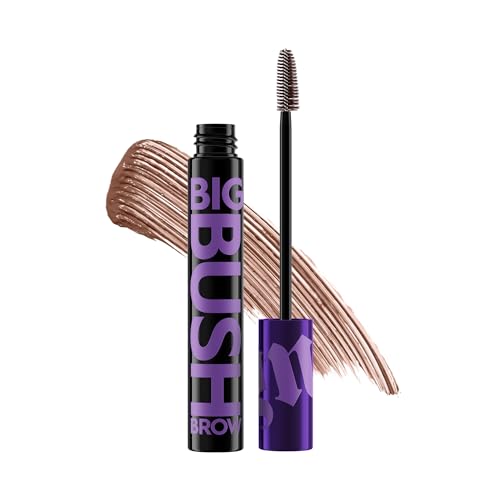
If the forecast predicts rain or you're spending time near water, choose Urban Decay's long-lasting waterproof eyebrow gel. It styles brows to stay firmly in place all day, even in the face of rain, sweat, and humidity. But the coolest thing about this brow gel is the spoolie—there are short bristles on one side for shape and definition, and long bristles on the other to thoroughly fill and tint. It also comes in several shades, and customers note that it's surprisingly buildable.
Hold: Strong
Shades: 9
What I Love: Waterproof; Dual-sided brush; Volumizing fibers for fullness
What I Don't: Sometimes the pigment can smear on the surrounding skin when applying
Review for MC: "I am very picky when it comes to brow gels. I already have pretty full eyebrows, so if I overdo it with a formula, it can come out looking blocky. I struggle with a brow gel holding up, but this one from Urban Decay manages to keep my eyebrow hairs in place while still keeping them looking natural and fluffy." — Siena Gagliano, Beauty Editor

Siena Gagliano applies Urban Decay Big Bush Volumizing Tinted Brow Gel.

Anastasia Beverly Hills' clear brow gel is a staple in Lau's makeup kit and a go-to in editors' makeup bags (including my own). It's long-lasting, never flakes, and styles my brows easily and instantly. It's also easy to wash off and never runs, even on humid days.
Hold: Strong
Shades: 1
What I Love: Expert-approved; Editor-approved; Easy to use; Doesn't run
What I Don't: Some users find it too shiny
Review for MC: "I don't always use brow gel because my brows are naturally pretty thick, but on nights out, I like for them to stay in line. I prefer this gel from Anastasia Beverly Hills because it works super quickly (you only need one swipe) and there's no pigment, which I like because tinted gels always get messy for me. Think of it like superglue (non-derogatory)." — Iman Balagam, Contributing Beauty Writer
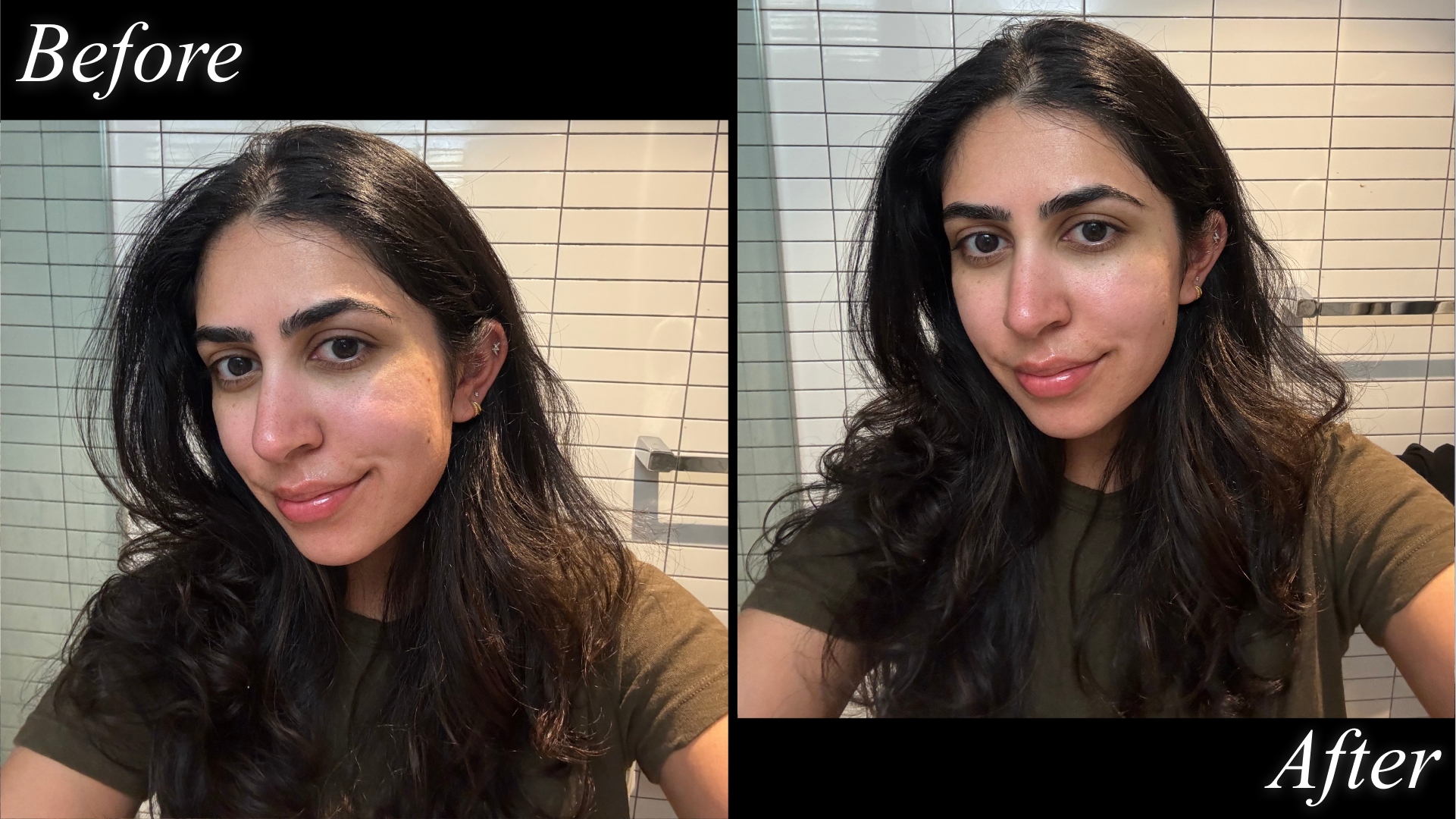
Iman Balagam applies Anastasia Beverly Hills Clear Brow Gel.
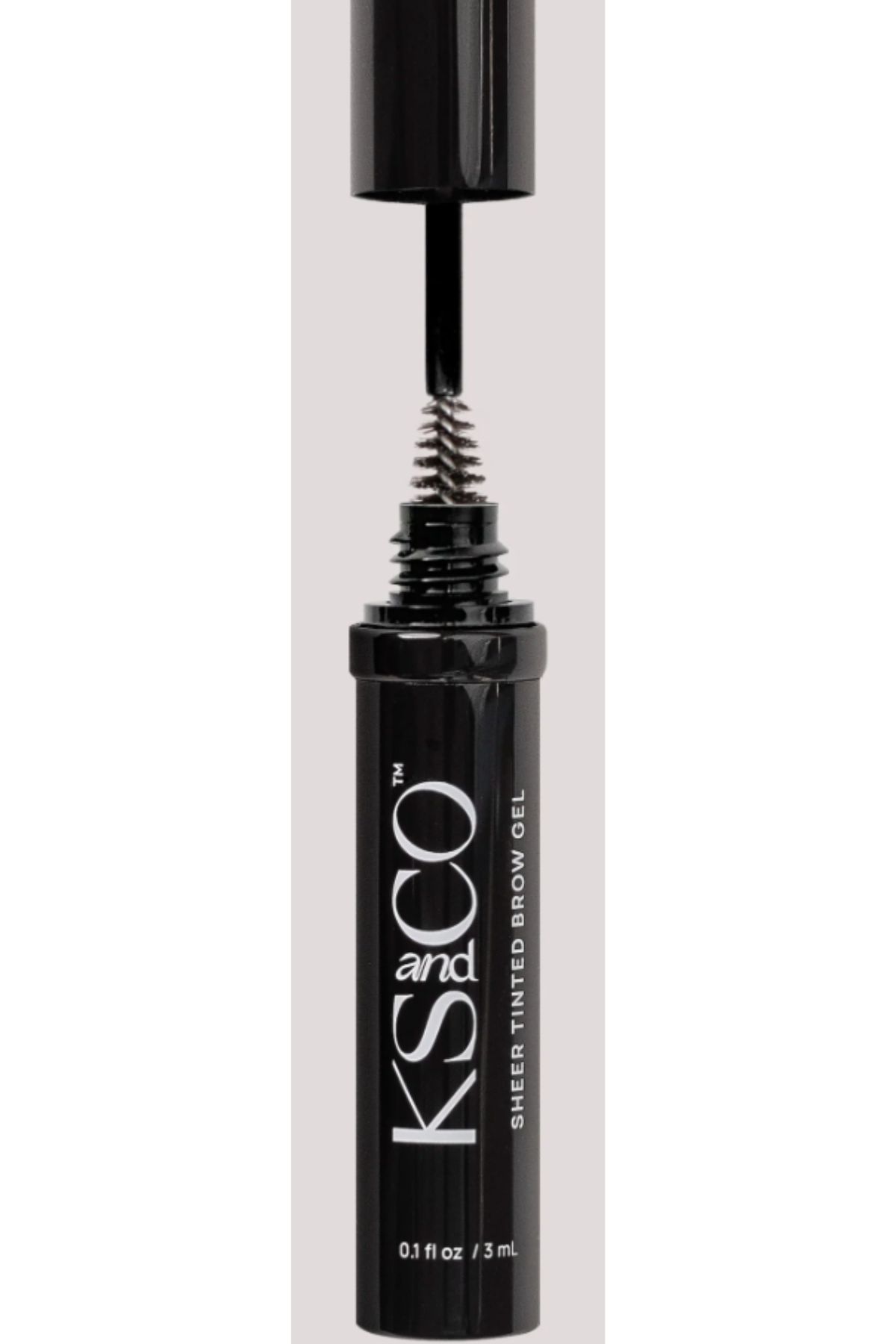
When a celebrity brow artist like Kristie Streicher formulates a product, you sit up and pay attention. This strong-hold brow gel is so easy to use, it's pretty much fool-proof, and delivers a beautiful textured finish for eyebrows that look as natural as possible. It's the go-to product for Marie Claire Beauty Director Hannah Baxter, and is a must for anyone looking for separation, fullness, and subtle color with their brow routine.
Hold: Strong
Shades: 2
What I Love: Expert-approved; Editor-approved; Easy to use; Doesn't run; Natural-looking texture
What I Don't: Can make brow hairs feel slightly crunchy if you use too much
Review for MC: "I've been using this tinted brow gel since its release and, to be quite honest, I've never gone back to another formula. It never deposits too much color in any one area (we're all been there with a cotton bud to wipe up chunky splotches) and it leaves my brows looking full, fluffy, and locked in place from day to night. Even when I can't swing an appointment with the brand founder, Kristie, for a tint and shaping, this gel is the next best thing for gorgeous brows." — Hannah Baxter, Beauty Director
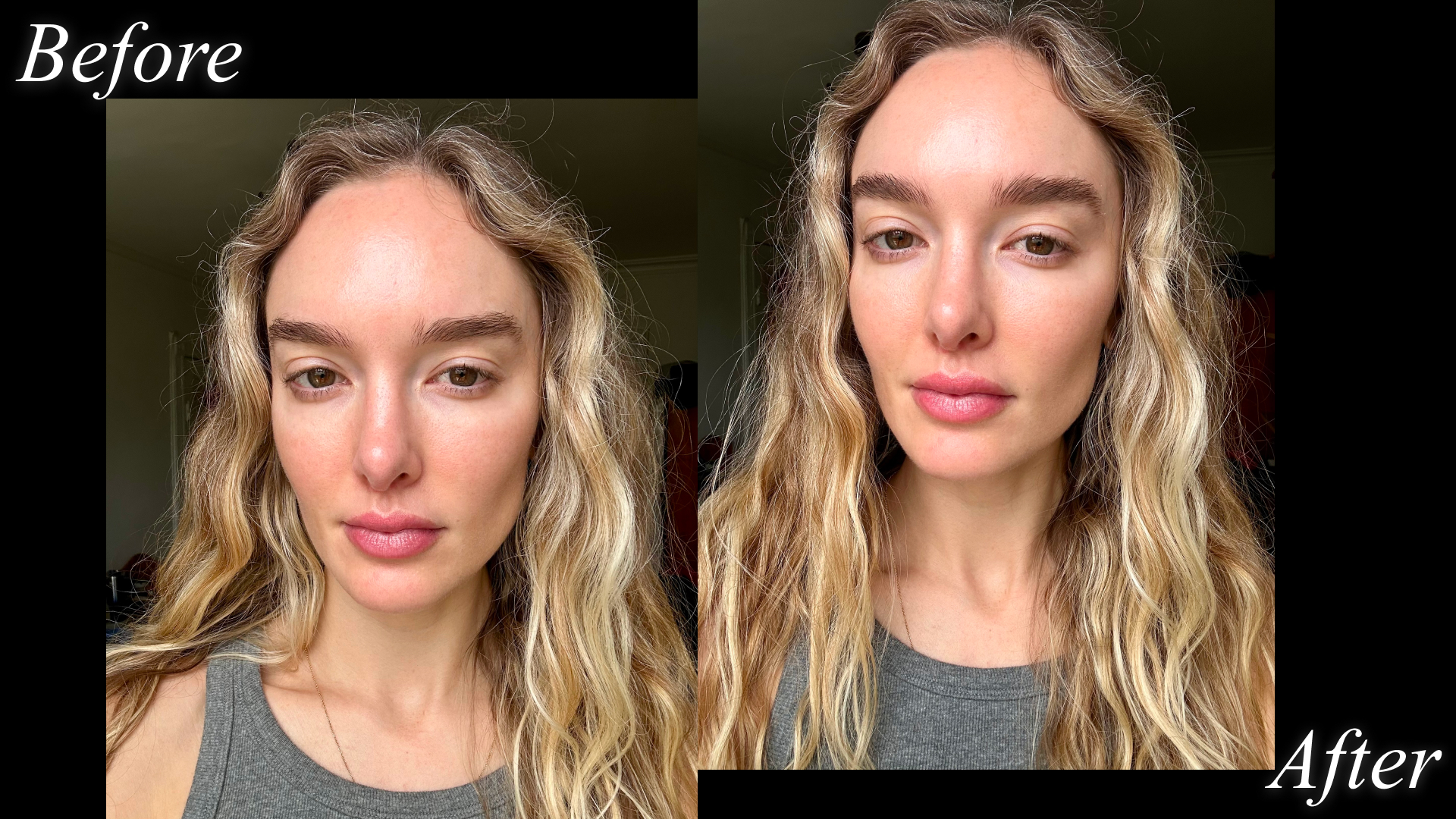
Hannah Baxter applies KS&Co Sheer Tinted Brow Gel.
Other Brow Gels I Love
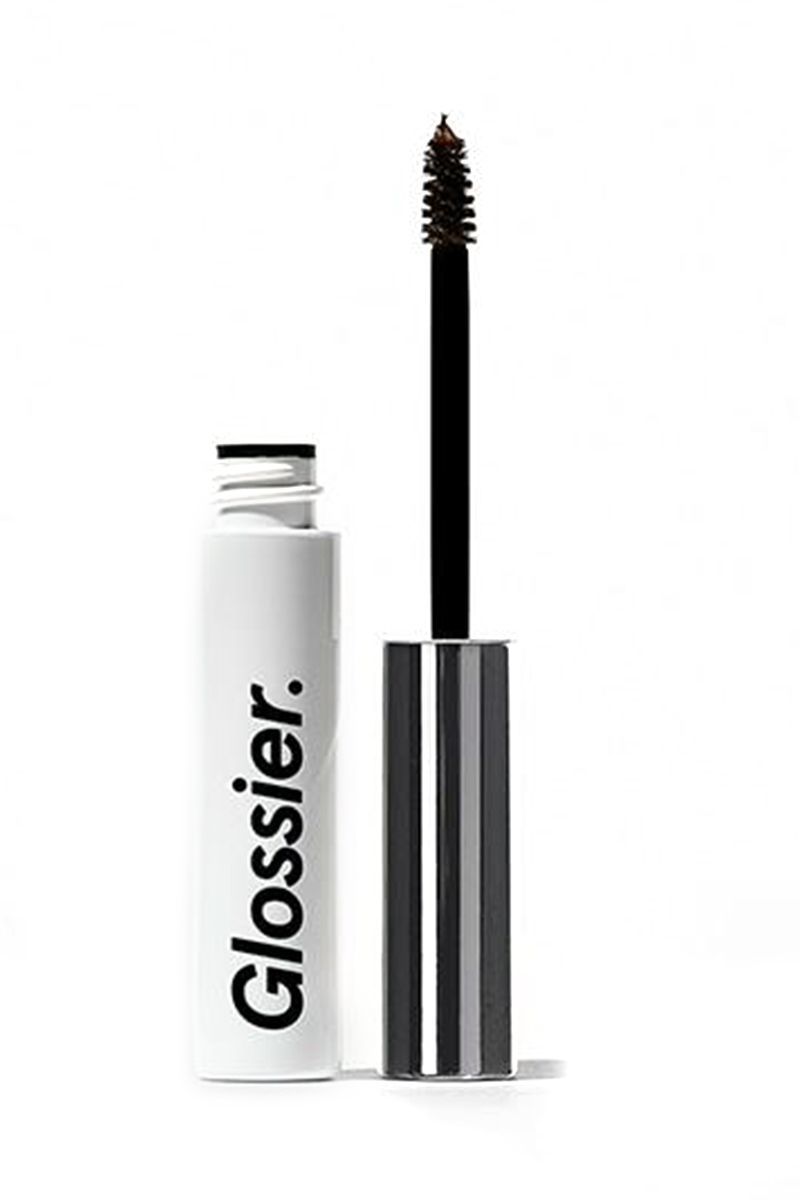
Glossier's Boy Brow remains a cult- and editor-favorite for sculpted, full brows. The itty-bitty spoolie brushes on the perfect amount of buildable pigment and never stains the skin. Plus, it remains workable for a few full minutes, adds natural-looking volume, and never feels stiff. While the shade range isn't as vast as other brands, it covers all the foundational bases and has a clear option for natural shaping.
Hold: Medium
Shades: 7
What I Love: Buildable; Editor-approved; Natural finish; Range of colors; Long-lasting; Both clear and tinted options
What I Don't: Some testers complain about the small bottle
Customer Review: "After trying a lot of brow gels, this is the only one I have liked. The tint is pigmented enough that it makes a difference, but it looks natural. It holds my brows [for] up to eight hours of wear. But even when it starts to not hold as well, it still looks great!" -Sephora
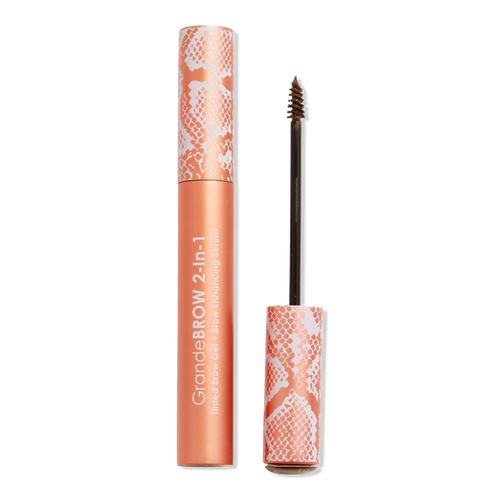
I use this brow gel almost every single day. It has a medium hold that tames my brows while keeping them looking natural, and its thin spoolie allows for precision. Best of all, it doubles as a brow growth serum, so I can rest assured that I'm supporting natural growth while keeping up my makeup look. This product is highly pigmented, so a little goes a long way—just be aware that it's easy to overapply.
Hold: Medium
Shades: 5
What I Love: Editor-approved; Supports brow growth; Matte/natural finish
What I Don't: Easy to overapply
Customer Review: "Loved this product! Not sticky or waxy like some, but still adds good control and really helps fill in sparse areas. Plus, I’ve definitely noticed fuller brows over time." — Sephora
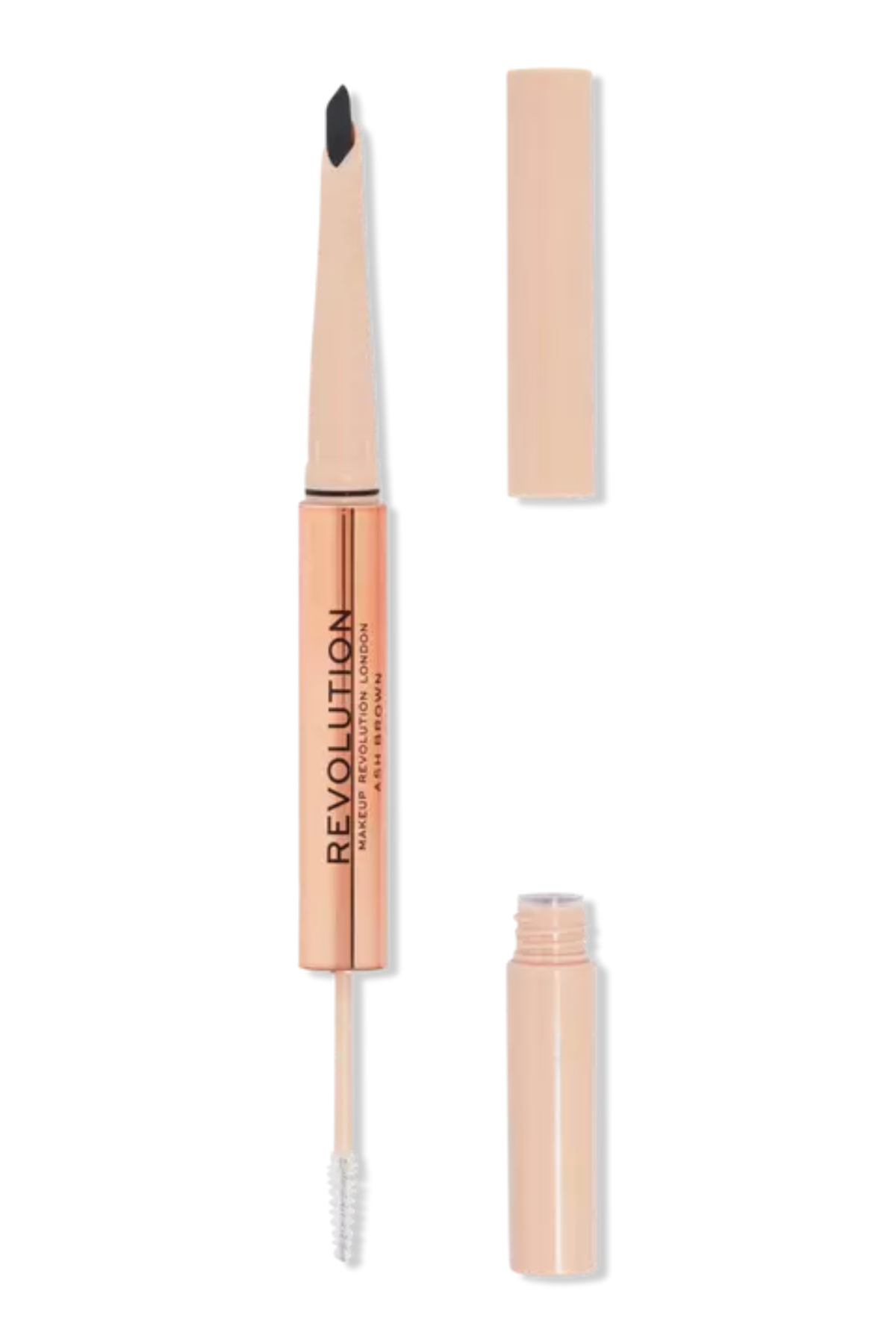
With a tapered pencil shape and built-in brow gel at the end, Makeup Revolution's Fluffy Brow Filter Duo is a must-have for makeup experts like Lau. It comes in five different colors that range from light to dark brown, and the pencil is ultra-thin, making it easy to draw brow-like strokes for a fuller, thicker appearance.
Hold: Medium
Shades: 5
What I Love: Includes both a pencil and a clear gel; Expert-approved; Affordable
What I Don't: Slightly limited color range
Customer Review: "This product is exactly what I was looking for! It achieves a natural look, and the wax provides excellent hold. I use it with a tinted brow gel/mascara, and the result is wonderful. Definitely repurchasing!" — Ulta
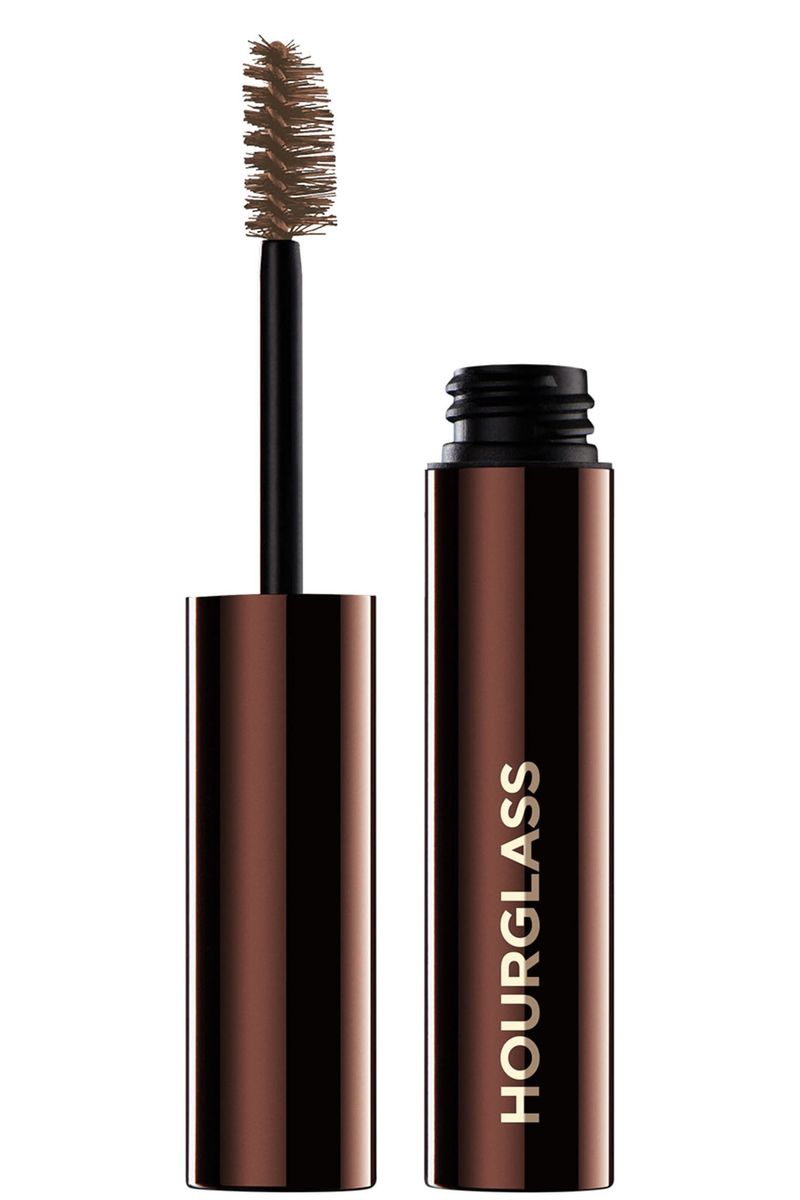
Hourglass's brow gel promises unmatched versatility. Whether you're going for an off-duty, no-makeup makeup brow or a gorgeously groomed stand-out brow, the buildable coverage of this fiber gel can do it all. It glides on effortlessly and has more of a soft, flexible hold, so feel free to create a perfectly imperfect, untamed brow.
Hold: Soft
Shades: 6
What I Love: Long-lasting; Versatile; Flexible hold
What I Don't: Not as strong of a hold as competitors
Customer Review: "Fabulous product. Gives your brows a nice look. Lightly fills in and keeps my brows in shape all day. This brow product makes my brows appear full and does not fade away. I don’t know why we don’t hear more about it. It really is that good. My brows have a few grays. This product covers them. I have dark brows, and soft brunette is perfect for me." — Nordstrom
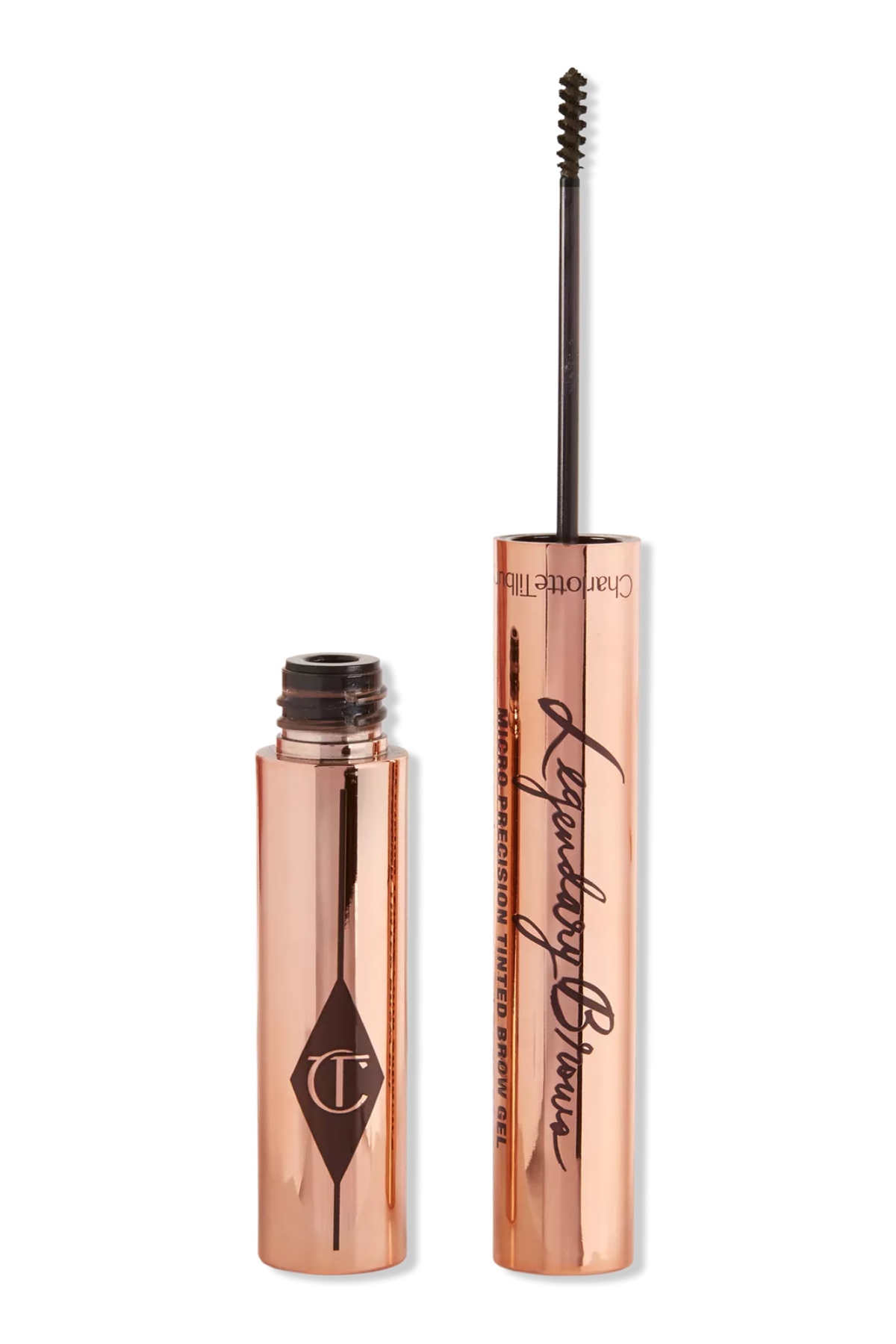
This eyebrow gel from Charlotte Tilbury is perfect for precise application that resembles individual hairs, thanks to the long, skinny spoolie. The result? A natural look that will leave everyone thinking that you grew thick, voluminous brows overnight.
Hold: Medium
Shades: 4
What I Love: Great for precision; Gives micro-bladed look
What I Don't: The Product is wet, so it takes a moment to set, which can be messy
Customer Review: "The formula for this product is sublime. Starting at the base of brows and sweeping upwards imparts a nice gloss and definition to each hair. Eyebrows are held in place without being stiff, and there’s no flaking. The brush has micro-fine bristles to catch each hair." — Nordstrom
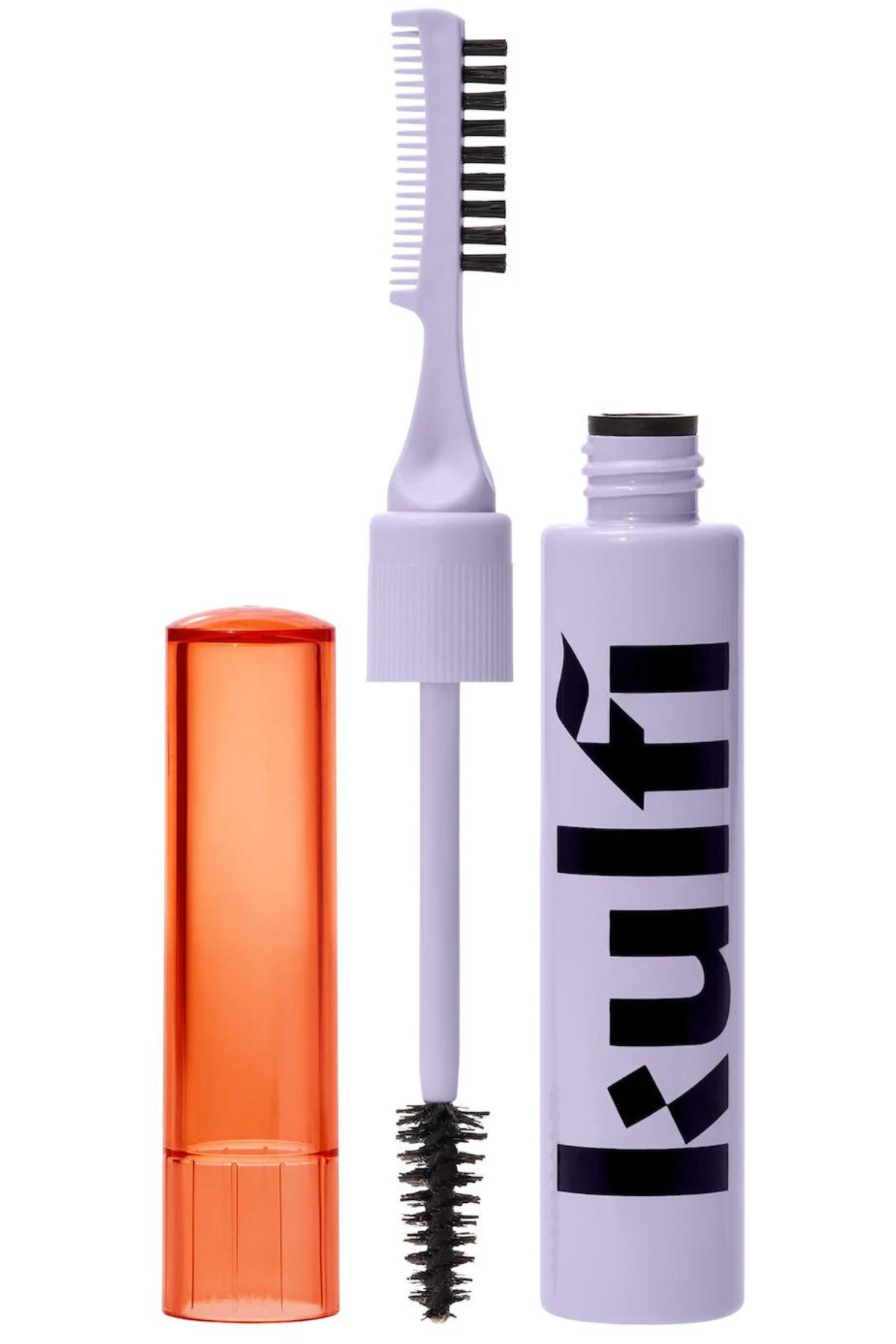
I'm a huge fan of AAPI-owned brand Kulfi Beauty's clean, mindfully made makeup, including its brow gel. The formula glides on smoothly and, because it's made with dark hair in mind, it never leaves even a hint of white residue or excess shine. Another bonus: It comes with a styling comb on one end that makes it easier than ever to get my brows exactly how I want them.
Hold: Soft
Shades: 1
What I Love: AAPI-owned brand; Editor-approved; No white residue; Clean; Cruelty-free; Natural finish
What I Don't: Not a strong hold
Customer Review: "I have super thick and wiry wizard brows, and this actually fluffed them! I also like how it gives my brows a satin as opposed to glossy finish, unlike most brow gels." — Sephora

Milk Makeup's entire beauty line is naturally formulated and good for your skin, including its Kush collection. This brow gel is infused with cannabis oil and beeswax to foster brow growth and follicular health while naturally filling in brows. With a conditioning effect, you can wear it day in and day out without worrying about drying out your brow hairs. It comes in a wide range of shades, too.
Hold: Soft
Shades: 8
What I Love: Conditioning; Supports brow health; Wide range of shades; Natural ingredients
What I Don't: Not super pigmented or strong-hold
Customer Review: "My favorite eyebrow gel to date. Not crazy looking while applying, perfect amount of product on the applicator. The only eyebrow gel I’ve finished and tried getting more out of." — Sephora
What Should I Look for in a Brow Gel?
All of the best brow gels add volume and tint, support brow growth, and simply keep brows in place. With so many formulas to achieve those effects, the brow gel suited to your beauty routine depends largely on personal preference. Lau mentions there are a few qualities that set high-quality brow gels apart.
“What I look for in an eyebrow gel is a product that locks the brow hair in place without flaking," she explains. "As a makeup artist, I need products to be malleable yet long-lasting. I tend to avoid any brow gels that are too heavy, in product, and color.”
Why Trust Marie Claire?
When it comes to the products Marie Claire recommends, we take your faith in us seriously. Every product that we feature comes recommended by a Marie Claire writer or editor, or by an expert we've spoken to. Learn more about how we review products.
How We Tested
Marie Claire is an authority on brow gels, having written countless stories about must-have eyebrow products and treatments, such as the best brow pencils on earth and how to tint your eyebrows, among others. The products on this list have all been tried and tested by one of our editors or hand-picked by beauty writers after testing the product over a few weeks.
While the best brow gel for you will vary based on personal preference, you truly can't go wrong with one of the items on this list.
Meet the Expert

Samantha Lau is a celebrity makeup artist with an innovative approach to beauty inspired by her background in fine art. She has worked with brands like Chanel, Yves Saint Laurent, Lanvin, Elie Saab, Balmain, Rochas, Marc Jacobs, Marc by Marc Jacobs, and more. She is currently based in New York City.
Get exclusive access to fashion and beauty trends, hot-off-the-press celebrity news, and more.
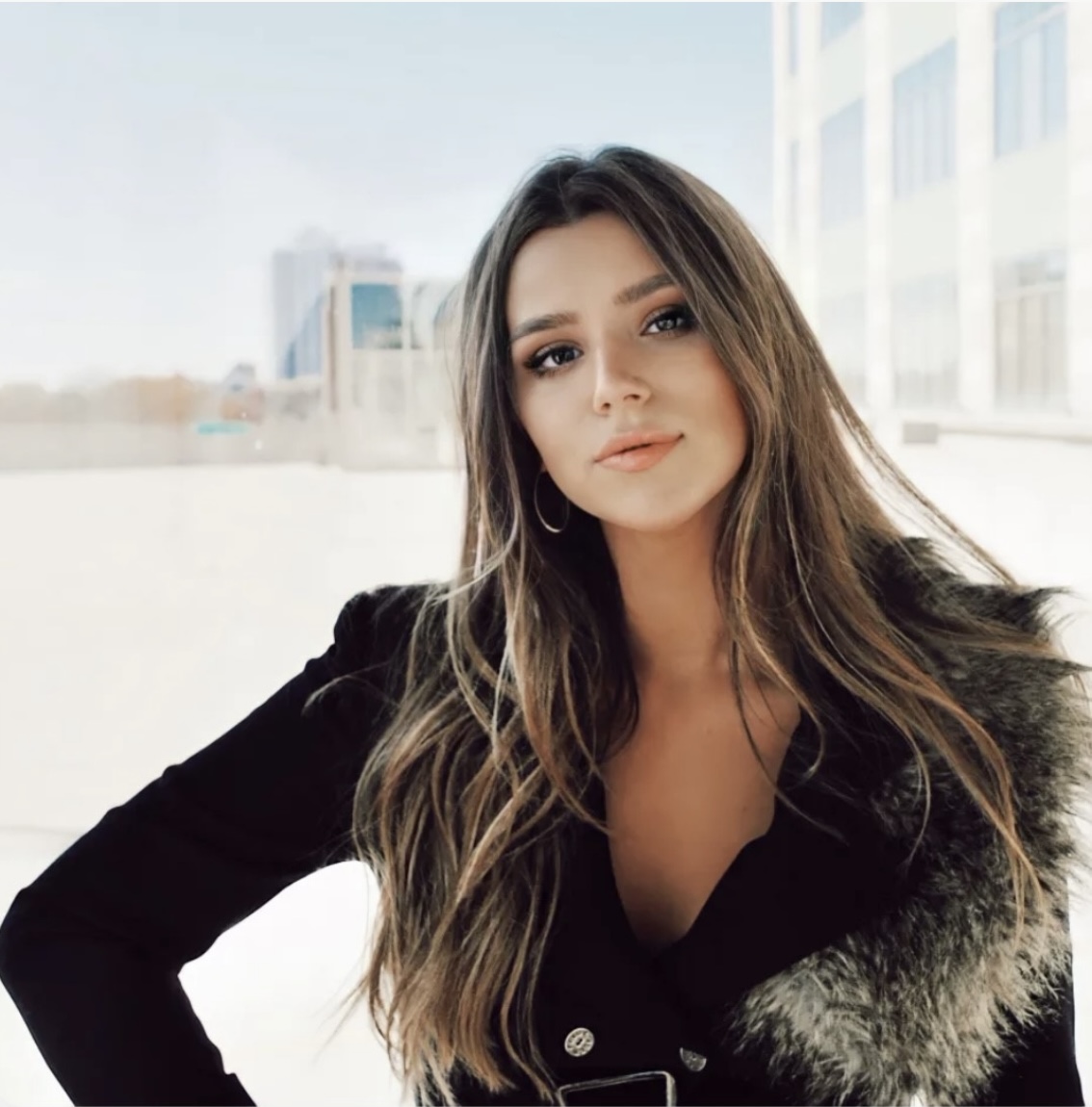
Siena Gagliano is the Beauty Editor at Marie Claire, where she writes and edits reported features, trend stories, and expert-backed shopping roundups. Before joining the team full-time, she was an editor at Cosmopolitan, where she specialized in SEO-first beauty content and commerce strategy. Her bylines have also appeared in Allure, ELLE, Bustle, Well+Good, Popsugar, and Women's Health, covering everything from the best products for brighter, glowier skin to the science behind face mapping. Curious about the behind-the-scenes magazine life and her go-to beauty picks? Follow her on Instagram at @sienagagliano.
- Gabrielle UlubayBeauty Writer